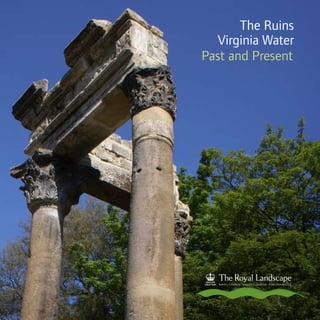The Ruins at Virginia Water were constructed in 1827 using stones from the Roman city of Leptis Magna in Libya. Sir Jeffrey Wyatville arranged columns, arches, and other architectural elements from Leptis Magna to resemble a ruined Roman temple. Over time the monument deteriorated, with columns falling and walls collapsing. A restoration project in 2008 rebuilt walls, re-erected columns, and addressed deterioration to return the Ruins to their original design.








